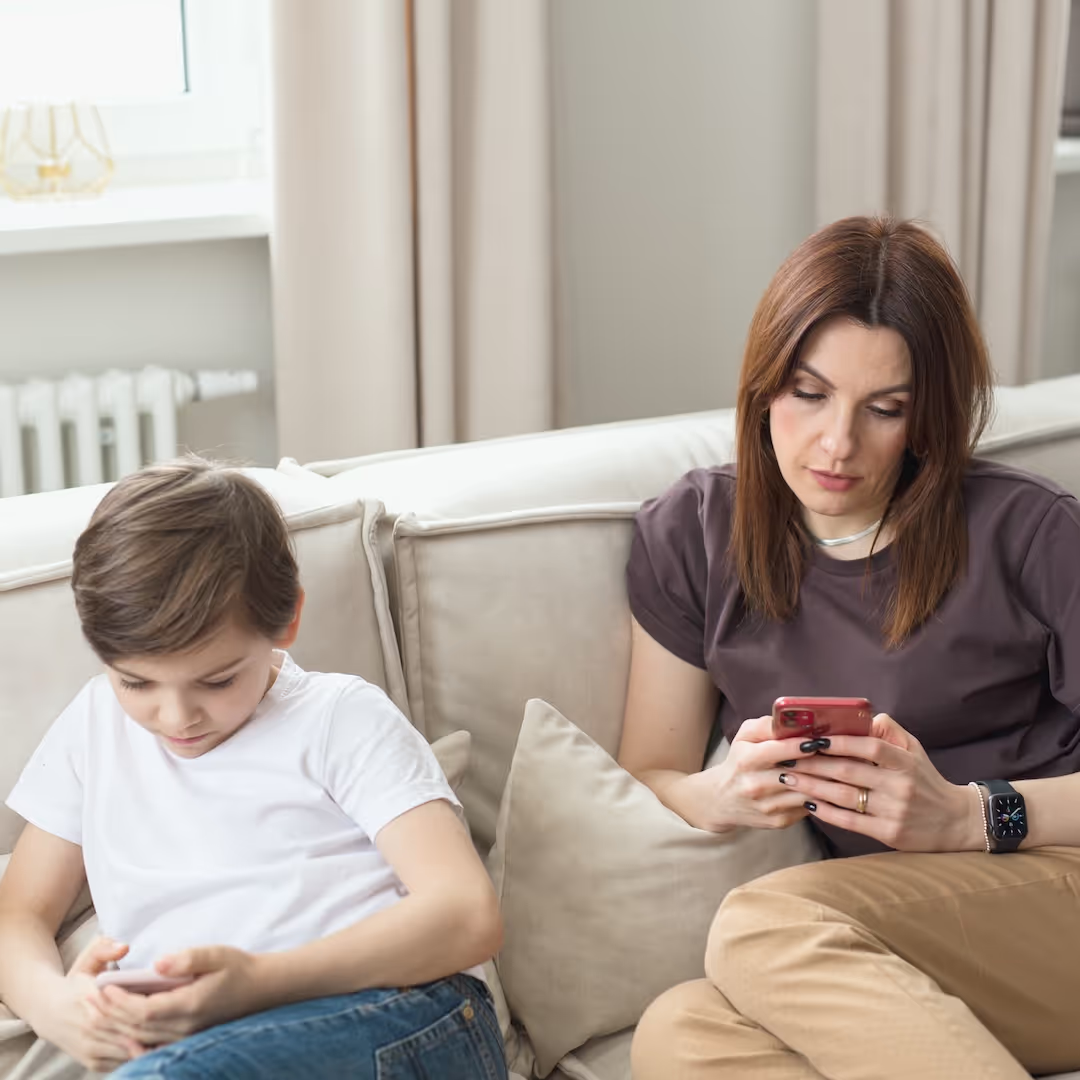


Finstagrams are “private” Instagrams meant only for your closest friends. Many kids just refer to them as their private Instagram account. Here’s the definition from the Urban Dictionary:
“Finstagram, finsta for short, is a mixture of Fake & Instagram. People, usually girls, get a second Instagram account along with their real instagrams, rinstagrams, to post any pictures or videos they desire. The photos or videos posted are usually funny or embarrassing. Only your closest friends follow this account."
Teens create Finstagrams to have a place where they can be themselves with only their “closest” friends. I talked to a 13-year old named Maya who has two accounts, as do most of her friends. Her Finstagram account has 70 friends while her main “public” account has 800. Maya’s Finsta-friends are people she may regularly hang out with at school or on weekends. Her regular account is not truly public in that she has to accept each person. She says she only accepts people that she knows are at least friends of friends.
Maya only has about a dozen pictures on her regular account, posting maybe once a month. According to her, the types of pictures she puts up have to be “really good.” Every picture is not necessarily a selfie, but each photo is a “beautiful” or artsy shot, whether it is a sunset or a picture of herself that she feels confident people will like. On the other hand, she posts pictures to her Finstagram page every other day. These can be silly shots, or moments that she wants to share with her closest friends. These people on her regular account “get” her and she says she doesn’t feel judged by them so she’s willing to put up many more pictures. She also uses her Finstagram page to communicate to the wider group things like meeting up to hang out downtown. Maya says communicating via Instagram versus group text is easier when you don’t want to get notified over and over, and go back and forth with people.
Ahhh… the intricate life of a teen.
Learn more about showing our movies in your school or community!
Join Screenagers filmmaker Delaney Ruston MD for our latest Podcast

Learn more about our Screen-Free Sleep campaign at the website!
Our movie made for parents and educators of younger kids
Learn more about showing our movies in your school or community!
Learn more about showing our movies in your school or community!
Join Screenagers filmmaker Delaney Ruston MD for our latest Podcast

Learn more about our Screen-Free Sleep campaign at the website!
Our movie made for parents and educators of younger kids
Join Screenagers filmmaker Delaney Ruston MD for our latest Podcast
As we’re about to celebrate 10 years of Screenagers, we want to hear what’s been most helpful and what you’d like to see next.
Please click here to share your thoughts with us in our community survey. It only takes 5–10 minutes, and everyone who completes it will be entered to win one of five $50 Amazon vouchers.
Finstagrams are “private” Instagrams meant only for your closest friends. Many kids just refer to them as their private Instagram account. Here’s the definition from the Urban Dictionary:
“Finstagram, finsta for short, is a mixture of Fake & Instagram. People, usually girls, get a second Instagram account along with their real instagrams, rinstagrams, to post any pictures or videos they desire. The photos or videos posted are usually funny or embarrassing. Only your closest friends follow this account."
Teens create Finstagrams to have a place where they can be themselves with only their “closest” friends. I talked to a 13-year old named Maya who has two accounts, as do most of her friends. Her Finstagram account has 70 friends while her main “public” account has 800. Maya’s Finsta-friends are people she may regularly hang out with at school or on weekends. Her regular account is not truly public in that she has to accept each person. She says she only accepts people that she knows are at least friends of friends.
Maya only has about a dozen pictures on her regular account, posting maybe once a month. According to her, the types of pictures she puts up have to be “really good.” Every picture is not necessarily a selfie, but each photo is a “beautiful” or artsy shot, whether it is a sunset or a picture of herself that she feels confident people will like. On the other hand, she posts pictures to her Finstagram page every other day. These can be silly shots, or moments that she wants to share with her closest friends. These people on her regular account “get” her and she says she doesn’t feel judged by them so she’s willing to put up many more pictures. She also uses her Finstagram page to communicate to the wider group things like meeting up to hang out downtown. Maya says communicating via Instagram versus group text is easier when you don’t want to get notified over and over, and go back and forth with people.
Ahhh… the intricate life of a teen.
Sign up here to receive the weekly Tech Talk Tuesdays newsletter from Screenagers filmmaker Delaney Ruston MD.
We respect your privacy.
Finstagrams are “private” Instagrams meant only for your closest friends. Many kids just refer to them as their private Instagram account. Here’s the definition from the Urban Dictionary:
“Finstagram, finsta for short, is a mixture of Fake & Instagram. People, usually girls, get a second Instagram account along with their real instagrams, rinstagrams, to post any pictures or videos they desire. The photos or videos posted are usually funny or embarrassing. Only your closest friends follow this account."
Teens create Finstagrams to have a place where they can be themselves with only their “closest” friends. I talked to a 13-year old named Maya who has two accounts, as do most of her friends. Her Finstagram account has 70 friends while her main “public” account has 800. Maya’s Finsta-friends are people she may regularly hang out with at school or on weekends. Her regular account is not truly public in that she has to accept each person. She says she only accepts people that she knows are at least friends of friends.
Maya only has about a dozen pictures on her regular account, posting maybe once a month. According to her, the types of pictures she puts up have to be “really good.” Every picture is not necessarily a selfie, but each photo is a “beautiful” or artsy shot, whether it is a sunset or a picture of herself that she feels confident people will like. On the other hand, she posts pictures to her Finstagram page every other day. These can be silly shots, or moments that she wants to share with her closest friends. These people on her regular account “get” her and she says she doesn’t feel judged by them so she’s willing to put up many more pictures. She also uses her Finstagram page to communicate to the wider group things like meeting up to hang out downtown. Maya says communicating via Instagram versus group text is easier when you don’t want to get notified over and over, and go back and forth with people.
Ahhh… the intricate life of a teen.

It feels like we’re finally hitting a tipping point. The harms from social media in young people’s lives have been building for far too long, and bold solutions can’t wait any longer. That’s why what just happened in Australia is extremely exciting. Their new nationwide move marks one of the biggest attempts yet to protect kids online. And as we released a new podcast episode yesterday featuring a mother who lost her 14-year-old son after a tragic connection made through social media, I couldn’t help but think: this is exactly the kind of real-world action families have been desperate for. In today’s blog, I share five key things to understand about what Australia is doing because it’s big, it’s controversial, and it might just spark global change.
READ MORE >
I hear from so many parents who feel conflicted about their own phone habits when it comes to modeling healthy use for their kids. They’ll say, “I tell my kids to get off their screens, but then I’m on mine all the time.” Today I introduce two moms who are taking on my One Small Change Challenge and share how you can try it too.
READ MORE >
This week’s blog explores how influencers and social media promoting so-called “Healthy” ideals — from food rules to fitness fads — can quietly lead young people toward disordered eating. Featuring insights from Dr. Jennifer Gaudiani, a leading expert on eating disorders, we unpack how to spot harmful messages and start honest conversations with kids about wellness, body image, and what “healthy” really means.
READ MORE >for more like this, DR. DELANEY RUSTON'S NEW BOOK, PARENTING IN THE SCREEN AGE, IS THE DEFINITIVE GUIDE FOR TODAY’S PARENTS. WITH INSIGHTS ON SCREEN TIME FROM RESEARCHERS, INPUT FROM KIDS & TEENS, THIS BOOK IS PACKED WITH SOLUTIONS FOR HOW TO START AND SUSTAIN PRODUCTIVE FAMILY TALKS ABOUT TECHNOLOGY AND IT’S IMPACT ON OUR MENTAL WELLBEING.
